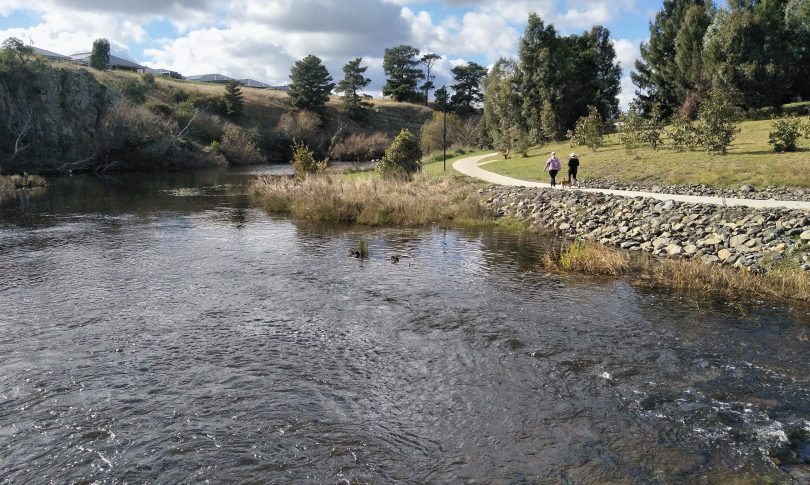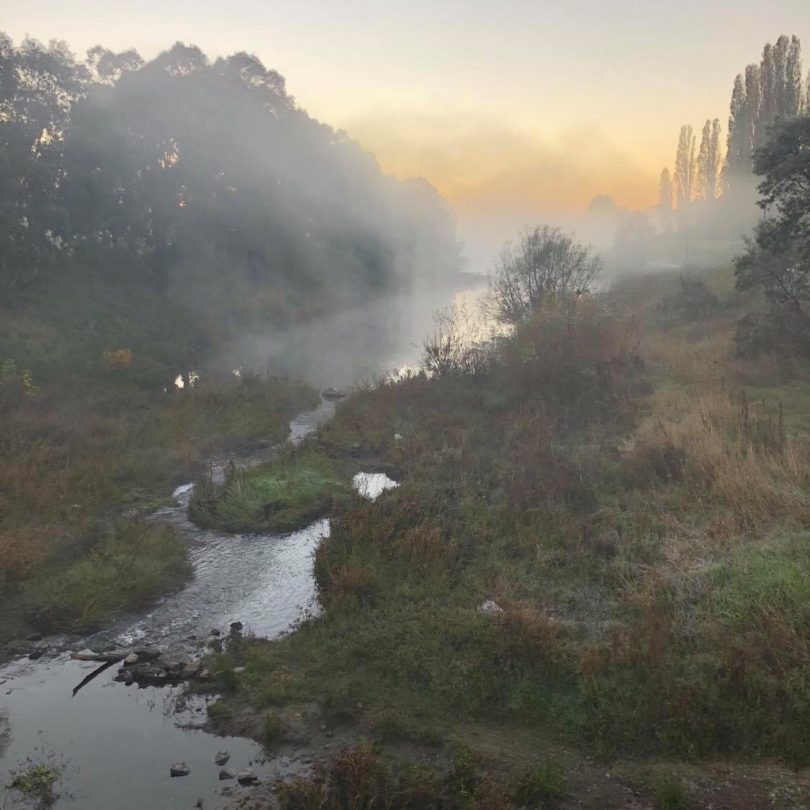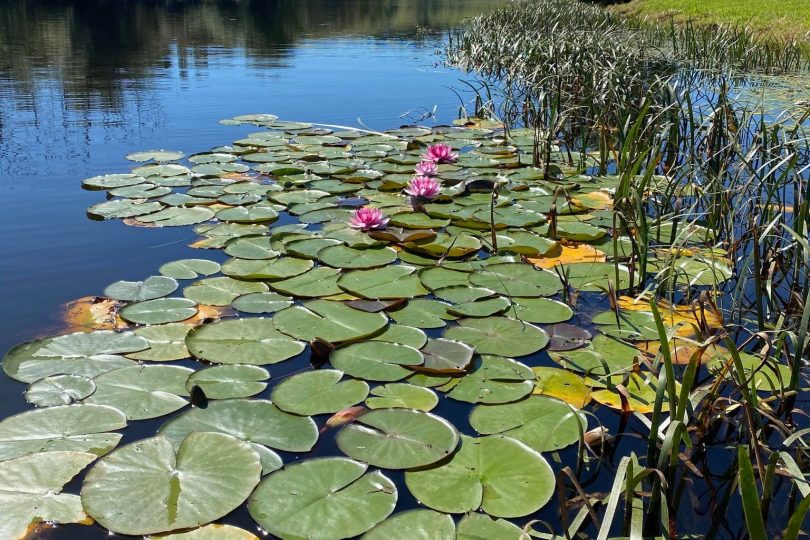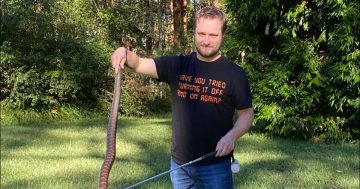
An uplifting walk awaits people visiting the Wollondilly River in Goulburn. Photo: Leon Oberg.
Before they leave the city’s borders, Goulburn’s two rivers launch a thousand journeys, and have done so throughout time.
Goulburn is a river city because these ancient waterways have sustained successive populations. In recent times, they have returned to prominence since the banks have been cleared and walking trails established.
A regular on the Man Walk at 6:00 am, Matt Casey rejoices in the low, golden sunlight through the fog, the trees’ long shadows across the path, and the swirling, babbling or roar of the water, depending on the weather.
“Conversations break out about family, memories and obliquely about the vicissitudes and joys of life,” he says. “There is an accompanying rhythm of the river as dawn appears almost unnoticed.”
Matt doubts walks would be as popular without the river.
Long before Europeans walked the banks, the rivers were crucial for Aboriginal people. Ngunnawal woman and Mulwaree Aboriginal Community Inc public officer, Jennie Gordon, says the Wollondilly River (Aboriginal for ‘water running over rocks’) and Mulwaree River (‘long water’) were highways for Indigenous people.
“The meeting of two rivers in Goulburn meant that people from many Aboriginal nations came here on the invitation of the traditional custodians for ceremony at special times of the year,” she says.
“The Tharawal, Dharug, Ngarigo and Wiradjuri people would join Gundungara and Ngunnawal nations for ceremony at Goulburn where food was available from the area. Gundungara Country continues for the length of the Wollondilly River system.
“The area now occupied by the Goulburn Historic Waterworks Museum was traditionally for significant women’s business, including a well protected area from westerly winds, with warm rocks and fresh water along with significant plants for women to birth babies.
“For millennia, Wollondilly River walks would include along the river and down across the large plains near where the old sewerage farms are – which were previous hunting grounds – and continue on the pathway to Narrangaril, Towrang and Cookbundoon.”

Matt Casey says the Goulburn river walk presents an ever-changing panorama depending on the time of day, flow of the rivers, and the weather. Photo: Matt Casey.
European settlers later began farming the river flats. In the early 1900s, on Goulburn’s eastern outskirts, Kentgrove had NSW’s biggest fruit orchard with 30,000 trees.
Upstream, a steam-driven pump drew water from the river up a hill near the escapement facing North Goulburn, into a one-megalitre-capacity turkey’s nest dam.
From there the water was gravity fed and distributed into the orchard’s lines of trees. Kentgrove’s cannery processed fruit from near and far, and once exported jam to England, says Doug Rawlinson, the property’s current owner.
Market-garden families such as the Harveys, Kadwells, Kerrs, Wheeldons and Toparis grew food in the rich soil.
Many other industries depended on the Wollondilly River. Thomas Gulson and John Farrell established a brewery on the banks near the Crookwell bridge. Farrell sold his interest in the business to Thomas’s brother, Frank Gulson, a brickmaker, and the Wollondale Brewery flourished.

Beautiful lilies on the Wollondilly River. Photo: Supplied.
Delicious beer flowed until one long, dry spell when previous water ran into newly formed wells, according to a newspaper report. Afterwards, every drop of beer made there became sour.
Today, Angella Storrier – who lives alongside Wollondilly River with her husband, Bill, upstream from Marsden Weir – counts her blessings each day amid the water’s ever-changing beauty, diversity of birds, colourful lilies and surface reflections of the sky and trees.
“Often, I am the only one on the river, paddling slowly, enjoying the absolute peace and relaxation, the sounds of frogs and birds adding to the ambiance,” she says.
Clearing willows and weeds downstream has improved fishing in the Wollondilly River. Fish N Shoots Tackleworld Goulburn owner Josh Lambert remembers when the river was so clogged up releases of fingerlings were a waste of time. The fish never survived.
Since the waterway has been cleared, introduced redfin have thrived. While an odious predator, redfin nonetheless provides plenty of sport.
“It’s brilliant,” says Josh. “While it reaches overpopulation, that keeps its size in check and it’s a great drawcard.”
Goulburn has made many claims to fame during its history – the rivers have been constant through them all.













